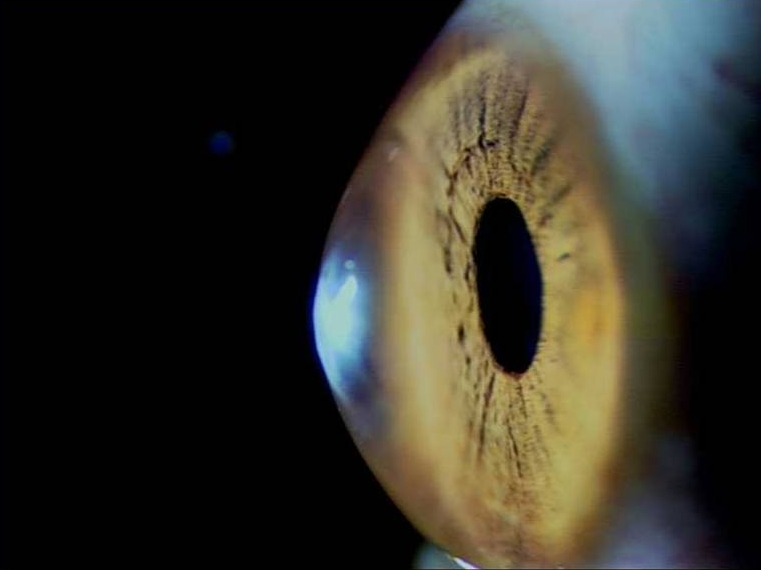
The cornea is a magnificent piece of tissue. Though largely made up of the same building blocks as bone and cartilage, it is miraculously transparent and the window to your soul. I’m waxing poetic about this tissue as I am a bit biased- I am a Cornea Specialist, after all!
As with any other structure or organ in the body, things can go wrong in some of us. Keratoconus is a progressive, degenerative corneal disorder. The cornea, again, is the clear dome shaped structure on the eye. In patients with keratoconus, one or both corneas can become progressively thin and bow forward. Take this analogy: if a normal cornea is round like a pregnant belly, a cornea with keratoconus is a bit of a ‘beer belly’ – it pooches outward and takes on an irregular shape. Not a good analogy?
Keratoconus may initially be diagnosed as astigmatism, but as the disease progresses, patients may experience increased levels of astigmatism that then is not correctable with glasses and soft contact lenses. They often experience distortion where they see multiple images, have glare, streaking, and sensitivity to bright lights. Generally, evaluation in an eye surgeon’s office will reveal high degrees of irregular astigmatism and corneal thinning. As the cornea bows forward, it typically becomes thinner (see the image above).
Keratoconus occurs worldwide and the cause has not yet been elucidated. The incidence of this disease is estimated to be 1/500 to 1/2000. We do know that there are certain genetic factors at play along with environmental and behavioral triggers. Often, a history of eczema, allergies (atopy) are associated. There is also an association with Down’s Syndrome. The disease often involves both eyes but can affect one eye asymmetrically, thankfully sparing one eye.
The management of keratoconus starts with avoiding eye rubbing and controlling any associated allergies or eczema. Evaluation by an ophthalmologist via topography and careful examination can determine whether the disease is progressive or static (not progressing anymore). Your optometrist (regular eye doctor) can also help in determining this by comparing year to year eyeglass prescription changes.
There are several, insurance covered procedures now available to treat keratoconus.
Should the disease be progressive, there are therapeutic options now available and FDA approved to halt the progression and, possibly, even decrease the corneal ‘bowing’. Collagen Crosslinking is a procedure that is now approved in the United States. Though beyond the scope of this article, Milan Eye Center surgeons have the ability to provide this newly approved procedure.
Should the disease be non-progressing, there are a few options available for a distorted cornea including laser guided Intacs, hard contact lenses, hybrid contact lenses and cornea transplant are available.
Though keratoconus can be an unforgiving disease that can significantly diminish your vision and affect your day to day life and activities, excellent options now exist to return levels of vision not possible before.
Make an appointment today at one of our eight convenient locations.
Schedule an Appointment Online
Or call 678-381-2020